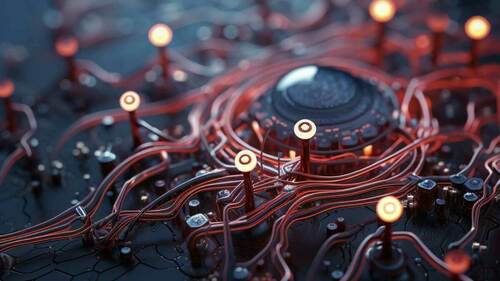
Microbes are social beings.
Much like humans, they communicate and cooperate with each other to solve problems bigger than themselves. In a microbial community, there will even be free riders, and others that police them.
So, what if researchers could influence their social evolution to promote certain behaviors? Doing so can be vital to solving many of today’s challenges such as combating infection and antibiotic resistance, developing microbial strategies for wastewater treatment or harvesting alternative energy sources.
A research group led by Dervis Can Vural, an associate professor in the Department of Physics and Astronomy at the University of Notre Dame, explored how the social evolution of microbes can be manipulated by tuning the physical parameters of the environment in which they live. The results were recently published in Biophysical Journal.
“Fluid dynamics changes everything,” Vural said. “What we wanted to know was whether we could engineer the social structure of microbial communities. Based on our models, the answer is yes.”
Microorganisms communicate and cooperate using various secretions that are costly to produce, yet provide a benefit to the whole community. These products are called “public goods.” For example, they might secrete digestive enzymes, which then break down the food around them, and this benefits all.
Then there are cheaters. These free riders don’t contribute to the pool of public goods as much, but they still benefit from the contributions of others — and they are a detriment to the system.
“Cheaters care more about their own success than that of the community,” Vural explained. “Since they contribute less to the public goods, they can dedicate more resources to self-reproduction. So, they multiply faster than others and eventually, they will dominate the population. The act of cheating spreads and you see very few microbes actually doing the work — and when nobody does the work, the whole population collapses.”
Through physically and biologically realistic computational models, the researchers set out to understand how to control the interaction structure to “help utilize the full potential of microbial populations,” they wrote in the study.
Fluid flow creates shear forces, a kind of motion that pulls microbial clusters apart and causes them to fragment. “If clusters fragment more often than the rate at which cheating mutants show up, cooperation prevails,” Vural said. “So, by controlling the pattern of flow, we can control the pattern of cooperation.”
Vural’s team looked at multiple means of controlling the evolution of social behavior, including applying different flow patterns through various chambers, funnels, microchannels, filters and chemicals, and in some cases in periodic pulses. Some models were designed to create a vortex, which, through its shear pattern, localized cooperators within a ring while pushing cheaters to the outer rim of the environment — essentially localizing cooperation.
“You can have microbes cooperate within one vicinity but nowhere else,” Vural explained. “You can promote cooperative behavior so there are no cheaters popping up and threatening the population. You can do the opposite — encourage cheaters to kill off a population of microorganisms if desired. And you can do anything in between. You can fine-tune the degree of cooperation.”
Vural’s approach doesn’t attempt to inhibit microbes’ ability to secrete a public good or waste or act as a cheater — instead, it creates an environment that causes the microorganisms to evolve in one way or the other. “We’re not dealing with individuals,” he said. “We’re making a whole population evolve by adjusting the physics in a way that incentivizes them to cheat or cooperate.”
The study is the latest research from Vural on the potential of engineering social evolution in microfluidic environments. “Turning these ideas into experimental reality will be a complex undertaking,” he admitted, saying that it will require a very fine-tuned device fixed with microscopic tubes, filters and flow chambers. But he said the results are very promising and motivate “evolutionary engineering” as a new field of study.
“Our work is typically theoretically driven, but in this case, we were motivated by the very real possibility of engineering social evolution,” Vural said. “Experiments will be complicated but there is huge potential for practical use.”
The simulations were carried out by Vural’s student Gurdip Uppal, now at Harvard Medical School.
Contact: Jessica Sieff, associate director, media relations, 574-631-3933, jsieff@nd.edu